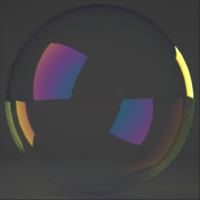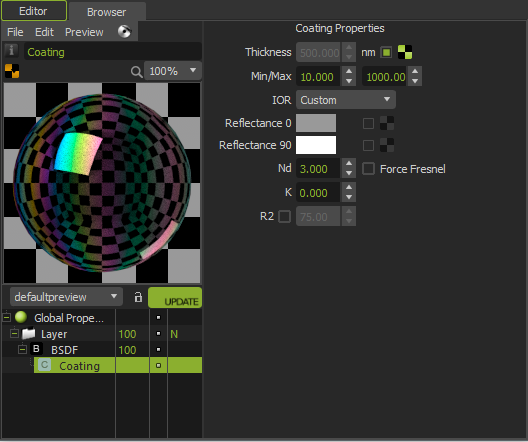Coating component
A coating is a very thin layer placed on top of a BSDF. Because coatings are so thin, they produce an effect called thin film interference, which breaks up the light and can cause a rainbow-like pattern. Think for example of spilling a drop of oil on a surface of water. The very thin layer of oil will create interference patterns on the water. Coatings can also be used to create rough materials with a clear coating. For example, a glossy white plastic can be made combining a diffuse BSDF with a coating.
A coating over a white diffuse surface.
A coating alone (disabling the BSDF) can be used to recreate a bubble.
The main property of a coating is its thickness. The thickness is specified in nanometers (nm). Thickness can be specified by a numerical value or through a weight map. If you use a map you can define a range of values among which the thickness will vary. Black in the texture represents the minimum thickness set below and white represents maximum value.
Maxwell color output when using a gradient (from black on the left to white on the right) on a coating with thickness set from 1 to 1000nm over a plane with a black BSDF
This is the material used to get the image above; please click on it to download the mxm file.
To avoid interference coloring, you should use higher thickness values such as 1 mm (1000000 nm).
Only one coating is allowed per BSDF. You can make a material using just a coating and no BSDF, for example to create a bubble material. To do this, add a coating, right-clicking on the BSDF component > Add Coating, and then simply hide the BSDF clicking in the visibility column in the layer list to disable it.



